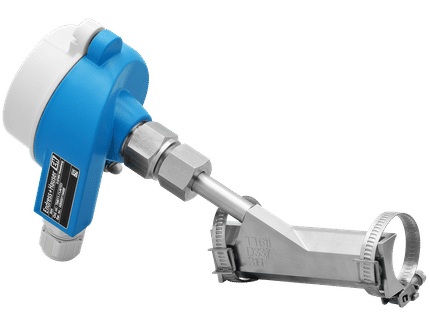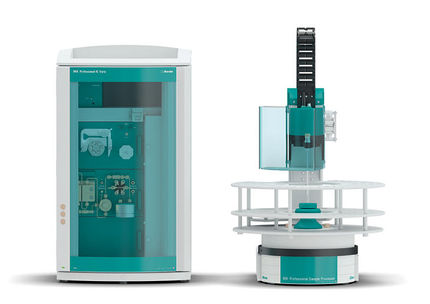TRPM is a family of transient receptor potential ion channels where the "M" stands for "melastatin".[1] Functional TRPM channels are believed to be tetramers.[2]
Unlike the TRPC and TRPV sub-families, TRPM subunits do not contain N-terminal ankyrin repeat motifs but, rather, contain entire functional proteins in their C-termini. TRPM6 and TRPM7, for example, contain functional α-kinase segments, which are a type of serine/threonine-specific protein kinase.
Permeability and activation
The relative permeability of calcium and magnesium varies widely among TRPM channels.
- TRPM4/5 are impermeable to calcium.
- TRPM3/6/7 are highly permeable to both calcium and magnesium.
The mechanism of activation also varies greatly among TRPM channels.
- TRP2 is activated by Adenosine diphosphate ribose and heat.
- TRPM2 is a sensor of redox status in cells.[3]
- TRPM4/5 are activated by intracellular calcium and heat.
- TRPM8, conversely, can be activated by low temperatures, menthol, eucalyptol and icilin.[4][5]
Functions
Among the functional responsibilities of the TRPM channels are:
- sensory transduction in taste cells (TRPM5).
- regulation of magnesium reabsorption in the kidneys and absorption in the intestines (TRPM6).[6]
Genes
- TRPM1, TRPM2, TRPM3, TRPM4, TRPM5, TRPM6, TRPM7, TRPM8
References
- ^ Kraft R, Harteneck C (2005). "The mammalian melastatin-related transient receptor potential cation channels: an overview". Pflugers Arch 451 (1): 204-11. PMID 15895246.
- ^ Jiang LH (2007). "Subunit interaction in channel assembly and functional regulation of transient receptor potential melastatin (TRPM) channels". Biochem Soc Trans 35 (1): 86-8. PMID 17233608.
- ^ Hara Y, Wakamori M, Ishii M, Maeno E, Nishida M, Yoshida T, Yamada H, Shimizu S, Mori E, Kudoh J, Shimizu N, Kurose H, Okada Y, Imoto K, Mori Y (2002). "LTRPC2 Ca2+-permeable channel activated by changes in redox status confers susceptibility to cell death". Mol Cell 9 (1): 163-73. PMID 11804595.
- ^ Behrendt HJ, Germann T, Gillen C, Hatt H, Jostock R (2004). "Characterization of the mouse cold-menthol receptor TRPM8 and vanilloid receptor type-1 VR1 using a fluorometric imaging plate reader (FLIPR) assay". Br. J. Pharmacol. 141 (4): 737-45. PMID 14757700.
- ^ Nilius B, Owsianik G, Voets T, Peters JA (2007). "Transient receptor potential cation channels in disease". Physiol. Rev. 87 (1): 165-217. PMID 17237345.
- ^ Schlingmann KP, Weber S, Peters M, Niemann Nejsum L, Vitzthum H, Klingel K, Kratz M, Haddad E, Ristoff E, Dinour D, Syrrou M, Nielsen S, Sassen M, Waldegger S, Seyberth HW, Konrad M (2002). "Hypomagnesemia with secondary hypocalcemia is caused by mutations in TRPM6, a new member of the TRPM gene family". Nat. Genet. 31 (2): 166-70. PMID 12032568.
| Membrane transport protein: ion channels |
|---|
| Ca2+: Calcium channel | Voltage-dependent calcium channel (L-type/Cavα(1.1, 1.2, 1.3, 1.4), N-type, P-type/Cavα(2.1), Q-type, R-type, T-type, β-subunits (β1, β2, β4), γ-subunits (γ2) • Inositol triphosphate receptor • Ryanodine receptor • Cation channels of sperm • Two-pore channel |
|---|
| Na+: Sodium channel | Navα (1.1, 1.2, 1.4, 1.5, 1.7, 1.9) • Navβ (1, 3, 4) • Epithelial sodium channel |
|---|
| K+: Potassium channel | Voltage-gated (Kvα (1.1, 1.2, 1.3, 1.4, 1.5, 2.1, 4.2, 4.3, 7.1, 7.2, 7.3, 7.4, 10.1, 11.1/hERG) • Kvβ (1, 2), Shaker gene, KCNE1) • Calcium-activated (BK channel, SK channel, SK3) • Inward-rectifier Kir (1.1, 2.1, 2.2, 2.3, 3.1, 3.2, 3.4, 4.1, 4.2, 6.1, 6.2)) • Tandem pore domain K2P (1, 2, 3, 4, 6, 9) |
|---|
| Cl-: Chloride channel | Cystic fibrosis transmembrane conductance regulator |
|---|
| Porin | Aquaporin (1, 2, 3, 4) • Voltage-dependent anion channel (1) |
|---|
| Cations: TRP | TRPA (1) • TRPC (1, 2, 3, 4, 4AP, 5, 6, 7) • TRPM (1, 2, 3, 4, 5, 6, 7, 8) • TRPML (Mucolipin-1) • TRPP (1, 2)• TRPV (1, 2, 3, 4, 5, 6) |
|---|
| Other/general | Voltage-gated ion channel • Ligand-gated ion channel • Cyclic nucleotide-gated ion channel (α1, α3, β3, H1, H2, H4) • Stretch-activated ion channel |
|---|
|







